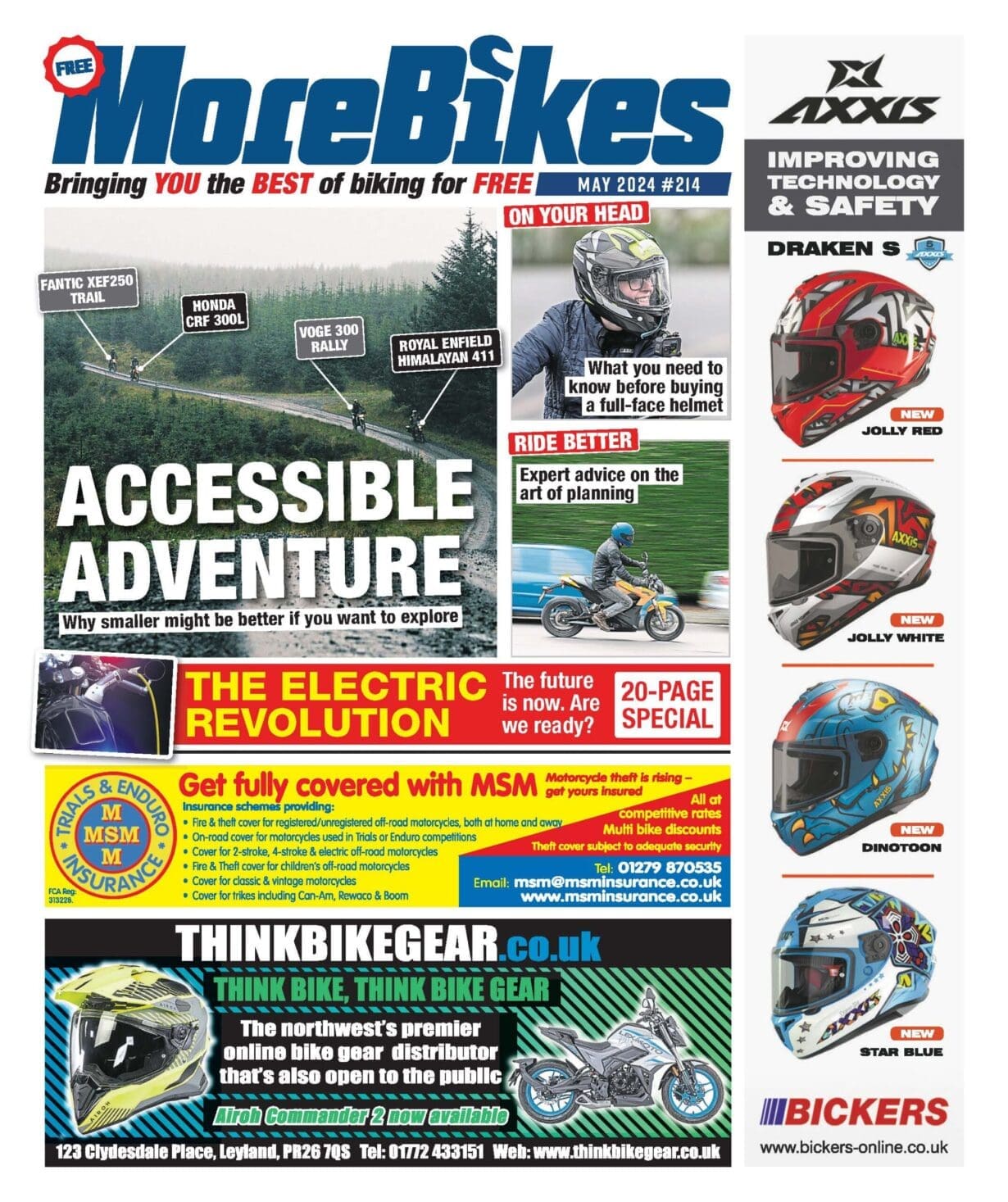Understand the driving force behind your bike with MCM’s handy hints and know-how…
When should I replace my chain?
A worn-out chain will sap power and potentially become dangerous. Since the drive chain is responsible for getting all the horsepower from the engine to the wheel, riders who want to transfer that to the ground properly need to have a decent chain.
Enjoy everything More Bikes by reading the monthly newspaper, Read FREE Online.
You need to choose a chain depending on your bike’s power output and its weight–a chain needs to transmit the right amount of power to move a bike and a heavier machine puts more strain on the chain. Most sport bikes and big touring bikes now run a 530-pitch chain as standard for road use. Signs that a chain needs replacing are an increase in vibration and/ or noise levels, plus excessive chain elongation. If your chain is too tight to start with, it will speed up wear through excess pressure on the sprocket teeth, chain joints and shaft bearings.
Slack chains can top sprocket teeth and also have a whip-like action that can lead to snapping.
Common causes of premature chain wear are a misaligned rear wheel and worn sprockets. Misalignment is indicated bywear on the side of sprocket teeth. Chains could develop tight joints because the sprocket teeth are forcing the inside plates outward on the bushings, and then binding the joint.
TIP: Check an old chain for signs of wear by pulling it straight back from the rearmost point on the rear sprocket. If more than half of the sprocket’s tooth becomes visible, consider replacing the chain.
When should I lube/adjust my chain?
The best way to extend a chain’s life is to clean, externally lube and adjust it regularly. Most manufacturers recommend checking a chain’s adjustment every 500 or so miles but it’s always worth a quick check each time before you ride.
Lubing your chain frequently is a must. All working parts should be lubricated uniformly – either chain lube or oil can be used. Always remove excess lube as it will either be thrown off on the move and/or attract and collect extra road crud. For those of you who don’t want the regular hassle of chain lubing, consider fitting a Scottoiler (www.scottoiler.com).
TIP: Consider using oil instead of chain lube spray. It does need to be done more regularly but doesn’t fling off and stick as much. Apply it to the upper edges of the link plates – this allows the most access of oil to the pin-bushing joints.
What’s an O-ring chain?
O-ring chains have small rubber Oring shaped seals that sit squashed between the pin link and the roller link plates, forming a barrier that holds factory-applied lubricant/ grease inside of the rollers. These seals also prevent dirt from entering the inside of the chain linkages and causing wear. When the lubricant between the O-ring and the link plate disappears, the O-ring will start to deteriorate.
What’s the difference between an O and X-ring chain?
X-ring chains use an O-ring type construction that has a X-shaped cross-section. Its seals are flatsided, so they have a greater contact patch with the sideplates. The Xring’s four contact points create an extremely tight seal, keeping lubrication in and dirt out. As a result, X-ring type seals have a lot less friction than O-ring ones because they do not have to be pressed as tight – less force is required to articulate the chain and therefore, the transmitted power is increased. This means X-ring seals should last longer and retain lubrication within the chain for a longer time too.
TIP: Race chains don’t have O or X-ring seals because this avoids loss of horsepower through friction. Longevity isn’t a problem as chains are changed frequently by the race teams.
Should I choose a steel or alloy rear sprocket?
Steel wears less and can do more road miles in bad weather than alloy, but steel is obviously heavier (most OE sprockets are steel, due to increased longevity and cheaper production costs). Good steel sprockets will be heat treated (to make them harder). Aftermarket aluminium alloy sprockets are used mostly for their weight-saving properties (can be one third lighter than their equivalent steel counterparts). Good ones are usually made from heat-treated 7075-T6 aircraft grade aluminium. Hard anodised ones have better Corrosion resistance and durability, a big plus for heavy road use.
TIP: Always replace a chain when replacing sprockets (and vice versa). The chain rollers/ sprocket teeth are designed to mate and wear together so, for example, if you use a new chain/worn sprocket together it can quickly wear down the chain.
Advert
Enjoy everything More Bikes by reading the MoreBikes monthly newspaper. Click here to subscribe, or Read FREE Online.




